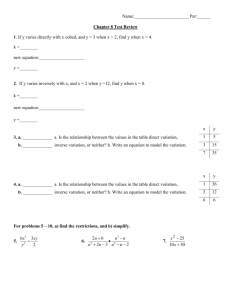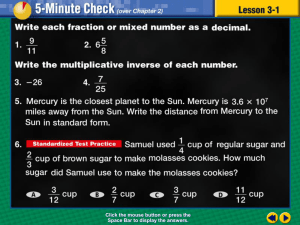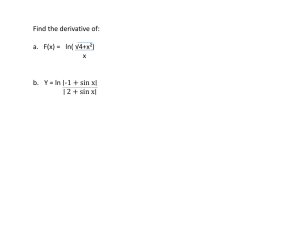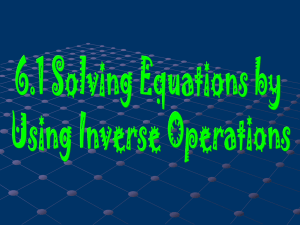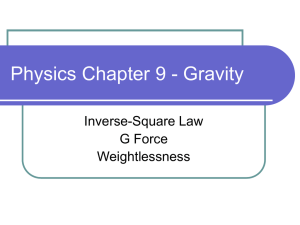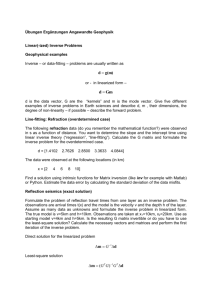Inverse-Square Law
advertisement
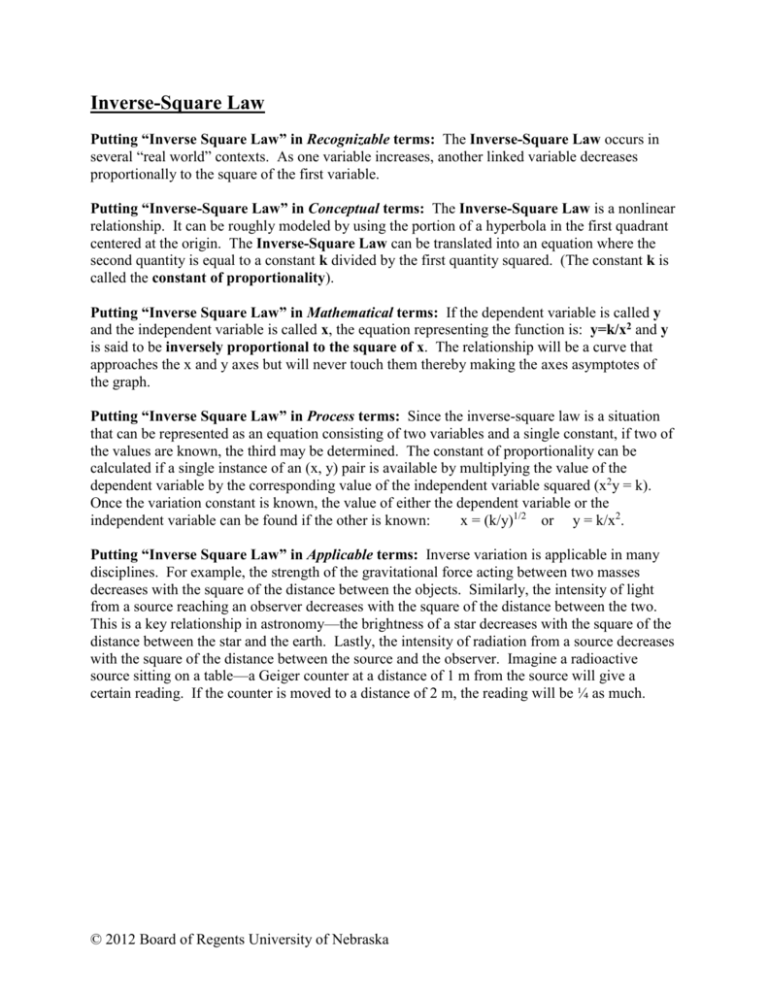
Inverse-Square Law Putting “Inverse Square Law” in Recognizable terms: The Inverse-Square Law occurs in several “real world” contexts. As one variable increases, another linked variable decreases proportionally to the square of the first variable. Putting “Inverse-Square Law” in Conceptual terms: The Inverse-Square Law is a nonlinear relationship. It can be roughly modeled by using the portion of a hyperbola in the first quadrant centered at the origin. The Inverse-Square Law can be translated into an equation where the second quantity is equal to a constant k divided by the first quantity squared. (The constant k is called the constant of proportionality). Putting “Inverse Square Law” in Mathematical terms: If the dependent variable is called y and the independent variable is called x, the equation representing the function is: y=k/x2 and y is said to be inversely proportional to the square of x. The relationship will be a curve that approaches the x and y axes but will never touch them thereby making the axes asymptotes of the graph. Putting “Inverse Square Law” in Process terms: Since the inverse-square law is a situation that can be represented as an equation consisting of two variables and a single constant, if two of the values are known, the third may be determined. The constant of proportionality can be calculated if a single instance of an (x, y) pair is available by multiplying the value of the dependent variable by the corresponding value of the independent variable squared (x2y = k). Once the variation constant is known, the value of either the dependent variable or the independent variable can be found if the other is known: x = (k/y)1/2 or y = k/x2. Putting “Inverse Square Law” in Applicable terms: Inverse variation is applicable in many disciplines. For example, the strength of the gravitational force acting between two masses decreases with the square of the distance between the objects. Similarly, the intensity of light from a source reaching an observer decreases with the square of the distance between the two. This is a key relationship in astronomy—the brightness of a star decreases with the square of the distance between the star and the earth. Lastly, the intensity of radiation from a source decreases with the square of the distance between the source and the observer. Imagine a radioactive source sitting on a table—a Geiger counter at a distance of 1 m from the source will give a certain reading. If the counter is moved to a distance of 2 m, the reading will be ¼ as much. © 2012 Board of Regents University of Nebraska



